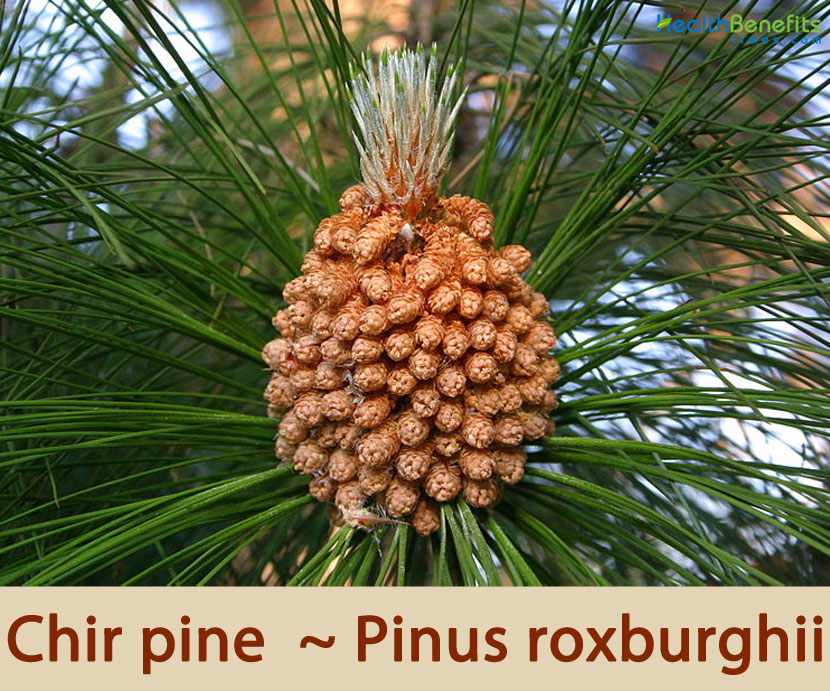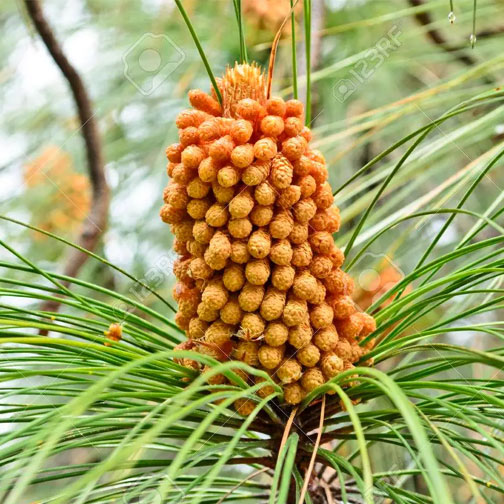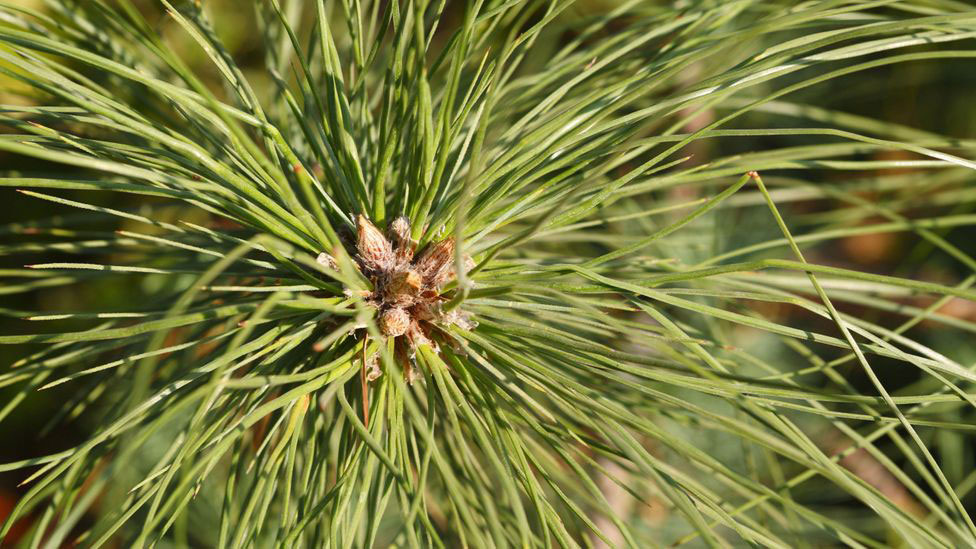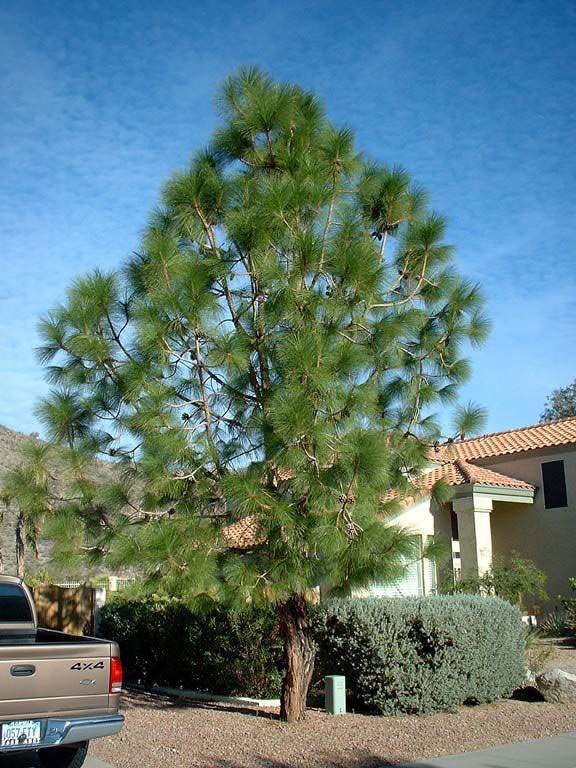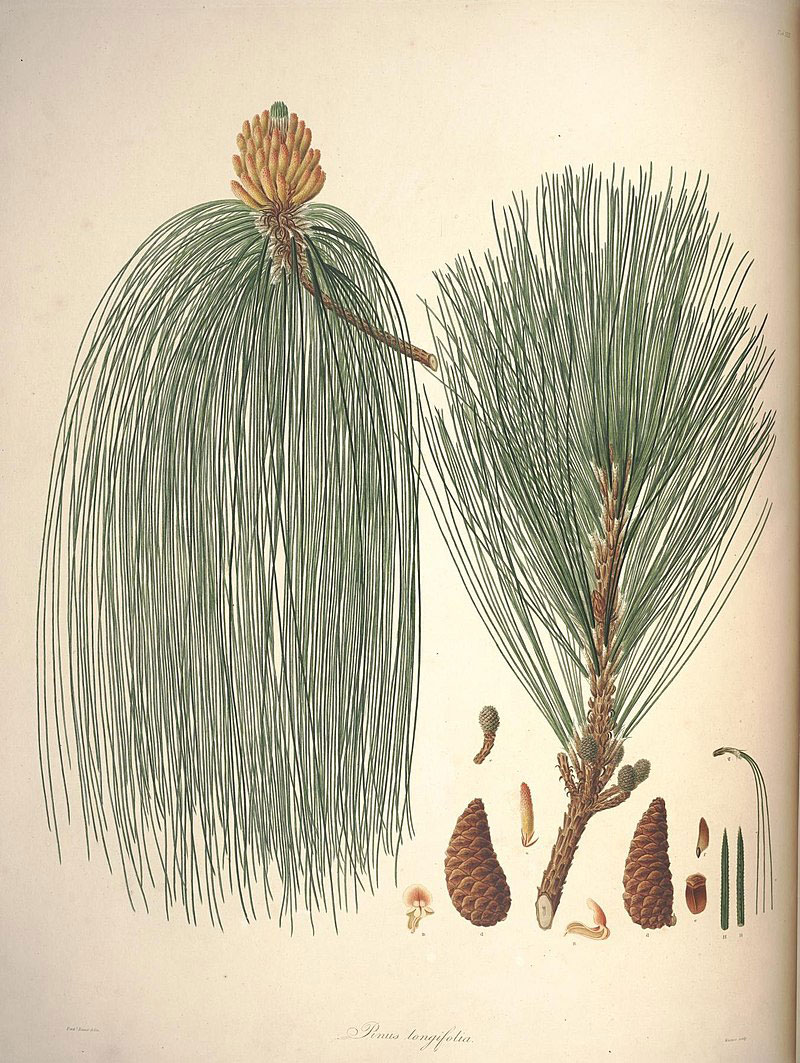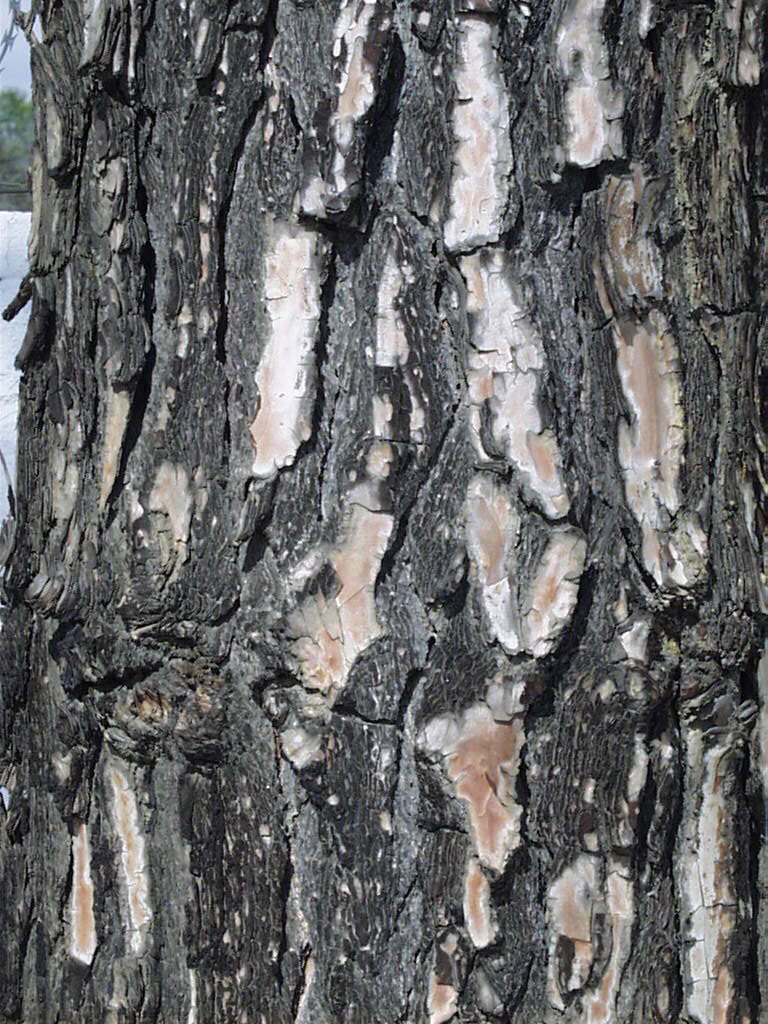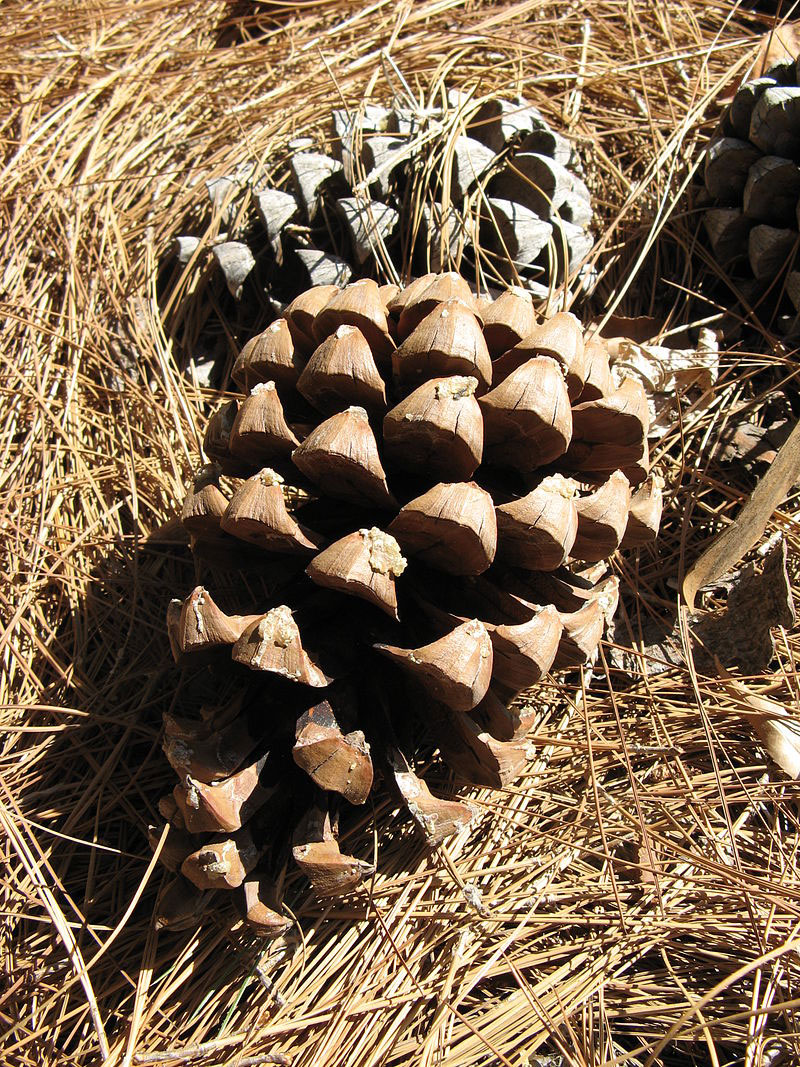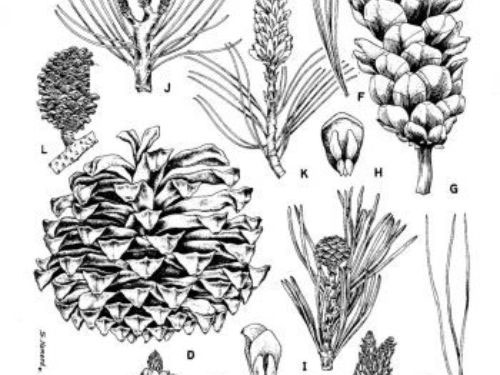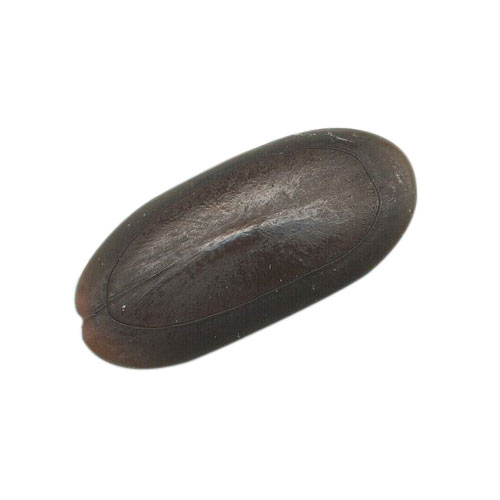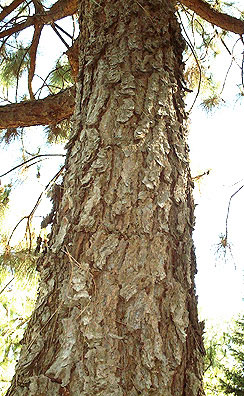| Chir pine Quick Facts | |
|---|---|
| Name: | Chir pine |
| Scientific Name: | Pinus roxburghii |
| Origin | Tibet and Afghanistan through Pakistan, across northern India in Jammu and Kashmir, Himachal Pradesh, Uttarakhand, Sikkim, Arunachal Pradesh), Nepal and Bhutan, to Myanmar. |
| Colors | Green at first, ripening to glossy chestnut-brown |
| Shapes | Cones are solitary or 2-5 together, 12–24 cm (4.7–9.4 in) long and 5–8 cm (2.0–3.1 in) broad at the base when closed on short stout stalks |
| Taste | Pungent |
| Health benefits | Good for Bronchitis, Piles, Indigestion, Sprain, Crack, Rheumatic pain, Good for pimples, Wound healing, Asthma |
| Name | Chir pine |
|---|---|
| Scientific Name | Pinus roxburghii |
| Native | Extends from Tibet and Afghanistan through Pakistan, across northern India in Jammu and Kashmir, Himachal Pradesh, Uttarakhand, Sikkim, Arunachal Pradesh), Nepal and Bhutan, to Myanmar |
| Common Names | Chir pine, Himalayan longleaf pine, Himalayan long needle pine, Indian chir pine, chir, chil, Indian long-leaf pine, Imodi pine, Cir pine, Himalaya long-leaved pine, Long-leaved Indian pine, Roxburgh’s pine, pine, Emodi Pine |
| Name in Other Languages | Afrikaans: Tjirden Arabic: Aalakus, Aalakoos, Arzah Bengali: Sarala gach, Saralagachcha Catalan: Pi de fulla llarga de l’Himàlaia, Pi de tres fulles de l’Himàlaia Chinese: Chang ye song (長 葉松 ), Luo zhi song (羅 氏松 ), Xi ma la ya chang ye song (喜马拉雅长叶松), Xi ma la ya song (喜 馬拉雅松 ), Xi zang chang ye song (西藏长叶松), Xu mi chang ye song (须弥长叶松) Czech: Borovice Roxburghova, Chir stýská si, borovice dlouholistá English: Chir pine, Himalayan longleaf pine, Himalayan long needle pine, Indian chir pine, chir, chil, Indian long-leaf pine, Imodi pine, Cir pine, Himalaya long-leaved pine, Long-leaved Indian pine, Roxburgh’s pine, pine, Emodi Pine Esperanto: Roksburg-pino Estonian: Roxburgh’ mänd Finnish: Himalajanmänty French: Pin à longues feuilles, Pin de l’Inde à longues feuilles, Pin du Tibet à longues feuilles, Pin indien aux longues feuilles, pin asiatique à longues aiguilles, Pin emodi German: Chirkiefer, Emodikiefer, Kiefer, Chir-; Kiefer, Emodi Gujarati: Saraladeodara Hindi: Behroza, Chil, Cīḍa (चीड) Chir, Chir gond, Cir (चीर), Pāri bhadra (पारिभद्र), Pāyas (पायस), Saral (सरल ), chir, urdu Hungarian: Himalájai hosszútus fenyo Italian: Pino indiano, Pino dell’Imalaia, pino di Roxburgh Japanese: Himaraya matsu (ヒマラヤマツ) Kannada: Saraḷa (ಸರಳ) Malayalam: Charaḷam (ചരളം), salla Manipuri: ꯎꯆꯥꯟ Uchan Nepali: Khote sallo (खोटेसल्लो), Salla, dhup, Khote Sallaa (खोटे सल्ला), Raanee Sallaa (रानी सल्ला), Aule Sallaa (औले सल्ला) Pakistan: Chil, chir Persian: Samaghe Sanobar, Kaaz, کاج کاشفی Polish: Sosna azjatycka, Sosna himalajska Portuguese: Pinheiro-indiano-de-folha-larga, pinheiro-dos-Himalayas Russian: Sosna Roksburga (Сосна Роксбурга) Sanskrit: Sarala, Sarata drava, Shrivasa, Saral (सरलः) Slovakian: Borovica dlholistá Spanish: Pino de Roxburgh, Pino de la India Tamil: Cīmai ttēva tāru (சீமைத்தேவதாரு), Shirsal, Simaidevadari Telugu: Sarala, Saralamu, Saraḷa dēvadāru (సరళదేవదారు), Devadaru Urdu: Pāri-bhadra (پاربهدر), Pāyas (پايس ), Saral (سرل) |
| Plant Growth Habit | Erect, round-headed large, evergreen tree |
| Soil | Thrives in a light well-drained sandy or gravelly loam. It can succeeds on calcareous soils and dislikes poorly drained moorland soils |
| Plant Size | 30–50 m (98–164 ft.) with a trunk diameter of up to 2 m (6.6 ft.), exceptionally 3 m (10 ft.). |
| Bark | Bark of poles and immature trees is dark-grey and deeply fissured, whereas that of older trees is red, turning light grey on surface with exposure |
| Leaf | Leaves are needle-like, in fascicles of three, very slender, 20–35 cm (7.9–13.8 in) long, and distinctly yellowish green. |
| Flowering season | February-April |
| Flower | Flowers are yellowish green before ripening, turning light reddish brown after the pollens are shed |
| Cone Shape & Size | Ovoid, solitary or 2-5 together, 12–24 cm (4.7–9.4 in) long and 5–8 cm (2.0–3.1 in) broad at the base when closed on short stout stalks |
| Cone Color | Green at first, ripening glossy chestnut-brown when 24 months old |
| Seed | 8–9 mm (0.31–0.35 in) long, with a 40 mm (1.6 in) wing, and are wind-dispersed |
| Taste | Pungent |
| Plant Parts Used | Wood, Oleoresin, oil, leaves, exudate, heart wood, stem powder |
| Health benefits |
|
| Season | October- November |
| Precautions |
|
Plant Description
Chir pine is an erect, round-headed large, evergreen tree. The tree crown is elongated and more or less pyramidal up to middle age but later becomes spreading, rounded or umbrella-shaped with a massive branch system. Under favorable conditions, it attains large dimensions and forms a straight cylindrical bole. The tree normally grows about 30–50 m (98–164 ft.) tall with a trunk diameter of up to 2 m (6.6 ft.), exceptionally 3 m (10 ft.). Trees up to 55 m in height and 3.5 m in girth have been recorded in favorable localities. The oldest chir tree of 406 years exists in Kulu Forest Division (Himachal Pradesh). Age of another old tree located in Chakrata Forest Division (Uttar Pradesh) has been predicted to be 335 years.
The plant is thrives in a light well-drained sandy or gravelly loam. It can also succeed on calcareous soils and dislikes poorly drained moorland soils. Owing to its shallow roots it is also attributed to soil erosion particularly in Himalayas. It does not allow any vegetation to grow around it by making soil more acidic through its fallen needles. Bark of poles and immature trees is dark-grey and deeply fissured, whereas that of older trees is red, turning light grey on surface with exposure, thickness ranges from 1 cm in young saplings to an average of about 5 cm in mature trees.
Leaves
Leaves are needle-like, in fascicles of three, very slender, 20–35 cm (7.9–13.8 in) long and distinctly yellowish green. They persist for 1-3 years but normally for about one and a half years. New needles (leaves) appear in February-March and old needles fall in May-June.
Flowers
The flowers are monoecious (individual flowers are either male or female, but both sexes can be found on the same plant) and are pollinated by wind. The flowers are yellowish green before ripening, turning light reddish brown after the pollens are shed. Flowering takes place during February-April.
Fruits (Cones)
Fertile flowers are followed by woody ovoid cones. Cones are solitary or 2-5 together, 12–24 cm (4.7–9.4 in) long and 5–8 cm (2.0–3.1 in) broad at the base when closed on short stout stalks. Young cones are erect; scales are arranged spirally and are hard, thick and woody. Cones are initially green ripening to glossy chestnut-brown when 24 months old. They open slowly over the next year or so, or after being heated by a forest fire, to release the seeds, opening to 9–18 cm (3.5–7.1 in) broad.
Cones take 25 months to mature. They begin to open in April or May, sometimes as early as March or as late as June, depending on weather conditions. Seeds are 0.7-1 cm long with 2.5 cm long thin membranous wing. The seeds are winged and lie in pairs at the base of each cone scale. 10-12 seeds weigh one gram and each cone bears on an average 58 to 42 seeds. Good seed years occur once every three to four years depending on the locality. Winged seeds are released from the cones which are carried to far off places by wind. The fallen seeds germinate with the onset of the monsoon.
History
Chir pine has been a part of the folklore and mythology of indigenous cultures in Uttaranchal. In Garhwal, there is a festival known as Pandaw. Here, the local people celebrate the occasion and include dance and songs. They also worship various deities and Gods. The festival goes on for several days and at the end of the ceremony, a tree of chir pine is uprooted and brought to the village. The tree is then adorned with various local fruits. Once the celebration is over, the fruits are distributed among the audience and these frits are considered holy. The twigs of chir pine are also used for religious purposes during the marriage ceremony for Hindus. Besides, a chir pine tree is used for the treatment of certain ailments. Traditional herbal healers usually prescribe asthma patients to stay in the chir pine forest to get better.
Traditional uses of plant parts of Chir pine
| Parts used | Traditional uses |
| Leaves |
|
| Wood |
|
| Bark |
|
| Oil/turpentine oil |
|
| Resin |
|
| Seed |
|
Health benefits of Chir Pine
Listed below are some of the popular health benefits of using Chir pine
1. Bronchitis
Bronchitis occurs when there is inflammation in the windpipe and the lungs of the human body, which results in the accumulation of sputum. This causes congestion in the respiratory tract and obstructs the air pathways. Chir pine tree is of great help when it comes to getting rid of the sputum which gets accumulated. Chir helps in easy removal of sputum and reduces the symptoms of bronchitis due to its Vata and Kapha balancing and Ushna properties.
2. Piles
Piles have become a common health problem due to the inactive lifestyle. It occurs as a result of chronic constipation. It might further result in pain and swelling around the anal region if ignored or left untreated and result in the formation of pile mass. Chir helps in the management of piles by providing relief from constipation due to its Vata balancing property. This helps in easy passage of stool from the body and prevents Piles.
3. Indigestion
Whenever the consumed food is left undigested due to low digestive fire, it results in the formation of toxic remains in the body due to improper digestion. This causes indigestion. In simple words, indigestion is the state of an incomplete process of digestion of the ingested food. Chir helps in the management of indigestion by digesting the Ama due to its appetizer and digestion properties.
4. Sprain
Sprain occurs when ligaments or tissue of the particular body part gets torn due to any external force, leading to immense pain and swelling which is regulated by an imbalanced Vata dosha. Decoction of Chir leaves can be applied on the affected area to reduce the symptoms of sprain like pain, swelling and redness due to its Vata balancing property.
5. Crack
Cracked skin is actually the symptoms of dehydrated skin, which occurs in response to scratches or infections. When the skin dries up, it becomes flaky and rough and tears start appearing on it. This is capable of causing deeper cracks called fissures. Chir pine can help healing cracks and reduces dryness in the body and provides relief to the individuals mainly because of oily and balancing properties.
6. Rheumatic pain
Rheumatism refers to the various painful medical conditions which affect joints, bones, cartilage, tendons, ligaments and muscles. Rheumatic diseases are also called musculoskeletal diseases and this is usually characterized by pain and constricts mobility and functions in one or more musculoskeletal system areas. In some cases there might be signs of inflammation, redness, warmth in the affected areas and sometimes, it can affect the internal organs. Chir or turpentine oil can be applied on the affected area and massaged gently. Doing this will relieve the individual of pain and swelling.
7. Good for pimples
Chir resin might help manage pimples due to its antibacterial and antimicrobial properties. When applied on the affected area, it prevents bacterial action on the skin. Certain constituents present in Chir also have anti-inflammatory property which reduces the skin inflammation occurring due to pimples.
8. Wound healing
Chir helps promote wound healing due to its healing property as it consists of strong antioxidants, anti-inflammatory, and antimicrobial components. The phyto-constituents present in Chir help in wound contraction and closing. It also helps in the formation of new skin cells and prevents the growth of microbes, thus reducing the risk of infection at the site of the wound
9. Asthma
Asthma occurs when the air passage swells up makes it difficult for the person to breathe. Thus the individual suffering from asthma faces repeated attacks of breathlessness and there is a wheezing sound coming from the chest. Chir Pine helps in treating such a problem because it contains chemicals that fight against the pain and swelling and it also seems to be effective in killing bacteria and fungus.
Traditional uses and benefits of Chir Pine
- Turpentine obtained from the resin of all pine trees is antiseptic, diuretic, rubefacient and vermifuge.
- It is a valuable remedy used internally in the treatment of kidney and bladder complaints and is used both internally and as a rub and steam bath in the treatment of rheumatic affections.
- It is also very beneficial to the respiratory system and so is useful in treating diseases of the mucous membranes and respiratory complaints such as coughs, colds, influenza and TB.
- Externally it is a very beneficial treatment for a variety of skin complaints, wounds, sores, burns, boils etc. and is used in the form of liniment plasters, poultices, herbal steam baths and inhalers.
- The wood is diaphoretic and stimulant.
- It is useful in treating burning of the body, cough, fainting and ulcers.
- The oil and turpentine from the tree can be used as a rub or in a steam bath to sooth muscles.
- It is also used in inhalers for respiratory infections; it is also used in creams for skin irritations.
- Chir pine oil is used as an antiseptic, a cream that helps with vascular circulation, and repels parasites from the body.
- Oil extracted from the tree is used for cleaning the wounds and applied over the area affected with localized inflammation.
- Powder from the stem in a dose of 2-3 g is used to treat fever and intestinal worms.
- Powder of the bark is applied as paste to treat skin diseases like ringworm, eczema.
- Powder of the bark or the cold infusion prepared using the bark of the plant is used to treat cough and asthma.
- Oil extracted from the plant is administered 1-2 drops in the ear canal to treat pain and inflammation of the area.
- Cold infusion prepared from the bark is given in a dose of 25-30 ml to treat diarrhea and leucorrhea.
- For indigestion 2-3 g of bark powder is given with 2-3 g of pepper powder as part of treatment.
- Chir is also helpful for treating respiratory problems such as bronchitis and asthma.
- Topical application of the chir pine helps form new skin cells and heals wound faster.
Culinary Uses
- Seed can be used raw or cooked.
- Not very nice, it has a strong flavor of turpentine and is only eaten as an emergency food.
- A sweet edible manna exudes from the bark and twigs.
- Vanillin flavoring is obtained as a by-product of other resins that are released from the pulpwood.
Other Facts
- Tan or green dye is obtained from the needles.
- Needles contain a substance called terpene, this is released when rain washes over the needles and it has a negative effect on the germination of some plants, including wheat.
- Resin is obtained from the sapwood.
- Trees are tapped for three years and then rested for three years.
- The yield is up to 5.5 kilos per tree.
- Oleo-resins are present in the tissues of all species of pines, but these are often not present in sufficient quantity to make their extraction economically worthwhile.
- Resins are obtained by tapping the trunk, or by destructive distillation of the wood.
- In general, trees from warmer areas of distribution give the higher yields.
- Turpentine consists of an average of 20% of the oleo-resin and is separated by distillation.
- Turpentine has a wide range of uses including as a solvent for waxes etc., for making varnish, medicinal etc.
- Rosin is the substance left after turpentine is removed.
- This is used by violinists on their bows and also in making sealing wax, varnish etc.
- Pitch can also be obtained from the resin and is used for waterproofing, as a wood preservative etc.
- Wood is very resinous and can be splintered and used as a torch.
- Charcoal made from the leaves, mixed with rice water, is used as an ink.
- Wood is used for construction, shingles, boxes etc.
- It is useful in cold climates but is not resistant to white ants.
- It is also occasionally used as an ornamental tree, planted in parks and gardens in hot dry areas, where its heat and drought tolerance is valued.
- Chir pine rosin is principally used in paper, soap, cosmetics, paint, varnish, rubber and polish industries.
- Besides these, other uses include manufacture of linoleum, explosives, insecticides and disinfectants, as a flux in soldering, in brewing and in mineral beneficiation as a frothing agent.
- It is used for various purposes including house building, as rafters, poles and posts, doors and windows, shingles, flooring blocks, packing boxes, boards, railway sleepers and in the manufacture of pulp and paper.
- It is suitable for boat building, tea chests, sports articles, bodies of violins, matchsticks, oars etc.
- Rosin and its derivatives are used in paper making, sizing, boot polish, adhesives, paints, printing inks, surface coatings, varnishes, textiles, rubber making, soap making, the entire industry, the sporting goods industry, and many others.
References:
https://pfaf.org/USER/Plant.aspx?LatinName=Pinus+roxburghii
https://en.wikipedia.org/wiki/Pinus_roxburghii
https://gd.eppo.int/taxon/PIURO
http://www.theplantlist.org/tpl1.1/record/kew-2562199
http://www.flowersofindia.net/catalog/slides/Chir%20Pine.html
https://apps.cals.arizona.edu/arboretum/taxon.aspx?id=476
https://indiabiodiversity.org/species/show/230749
https://www.conifers.org/pi/Pinus_roxburghii.php
https://www.cabi.org/isc/datasheet/41703
http://germoplasma.iniaf.gob.bo/gringlobal/taxonomydetail.aspx?id=28538


